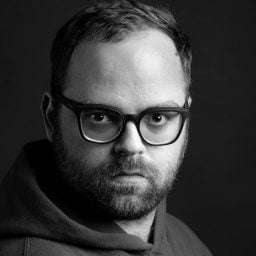On View
‘Now Everything Is Legit’: Futura 2000 on Street Art’s Legacy
The New York pioneer discusses all things graffiti ahead of a Bronx Museum retrospective.
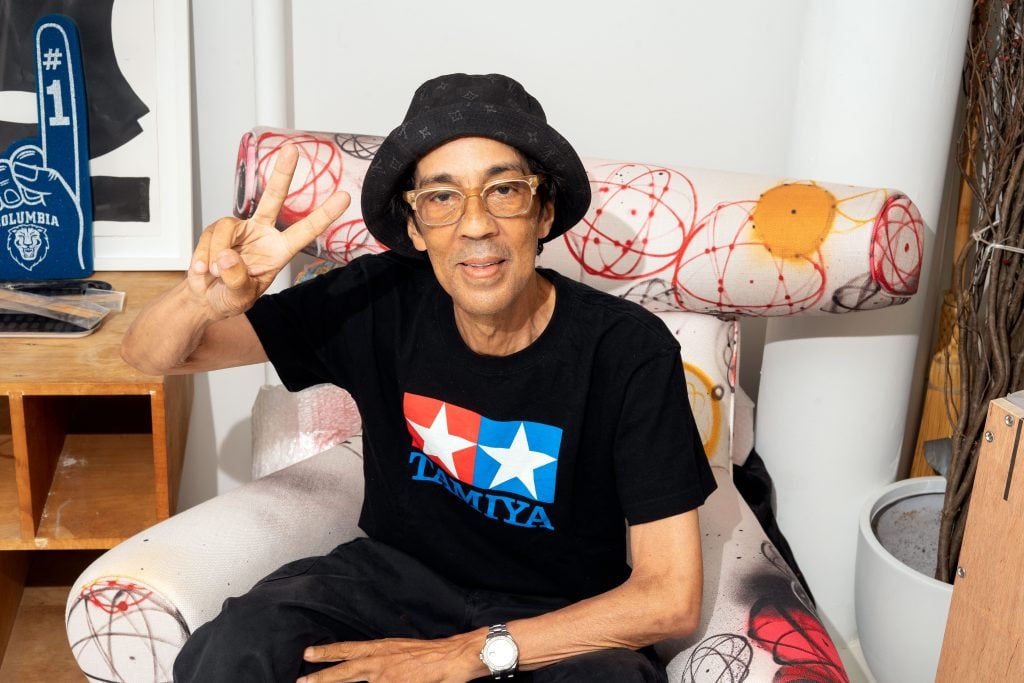
Leonard McGurr has landed a major retrospective at the Bronx Museum. The artist pioneered abstract graffiti as Futura 2000 in the New York subway scene of the 1970s and 80s, before beginning his studio practice.
Most often referred to as simply Futura, the 68-year-old native New Yorker was a contemporary and friend of Keith Haring and Jean-Michel Basquiat. He is being celebrated with the show “Futura 2000: Breaking Out” in a reference to his iconic Break train of 1980, in which he “bombed” (meaning intensely painted all over) a subway car, as photographed by Martha Cooper.
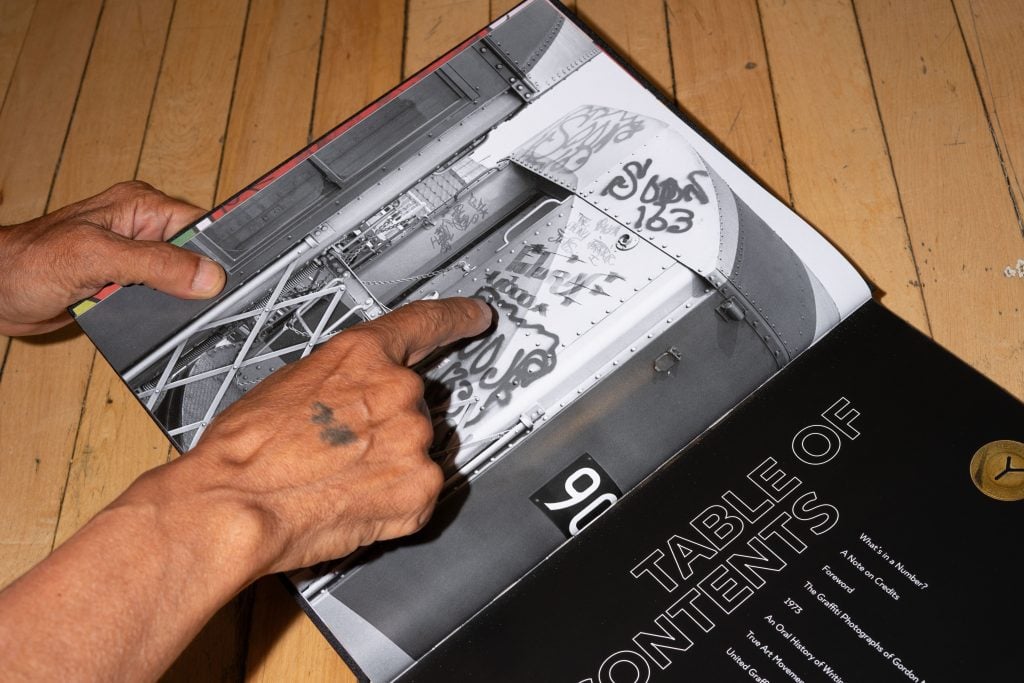
One of Futura 2000’s earliest tags is seen on the inside cover of an influential book of graffiti art by Gordon Matta-Clark. The artist is pictured pointing to his tag. Photo by Adam Schrader
The show is touring to the Bronx Museum following its first iteration at the University of Buffalo Art Galleries, though it is receiving special hometown treatment with new works specifically created for the exhibition. Eileen Jeng Lynch, the Bronx Museum’s curatorial director, said it shows the progression from Futura’s earliest graffiti to his fine art era.
“As Futura’s aesthetic evolved, he used the same materials—stencils and aerosol—but really carved a name for himself,” she said. “With his lines and gestures he’s able to bridge Abstract Expressionism, street art, and various disciplines.”
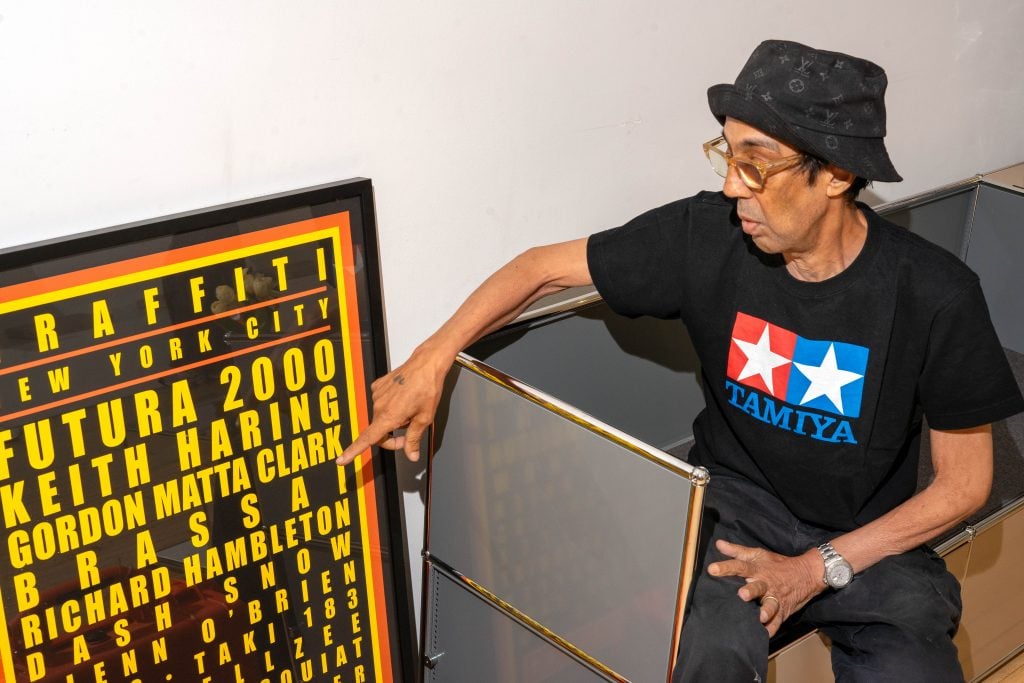
Futura 2000 points to the name of artist Gordon Matta Clark, who photographed the street art scene in the 1970s in a highly influential book, Photo by Adam Schrader
She hopes young people will enjoy the show, though added she thinks the exhibition has intergenerational appeal. “From his aesthetics of science fiction and the space age to video games, I think there’s aspects everyone can relate to,” she said.
Futura came up with his name in 1970 at the age of 15, and became an artist shortly after he was discharged from the U.S. Navy around 1978. He served during the space race with Russia, with associated themes appearing in his work ever since. He also credits this as a formative period that helped him remain disciplined in his craft.
The artist sat down for an interview at ICNCLST, the management agency that handles his projects, to talk about the past, present, and future of street art. “Murals, walls, things that people paint in public spaces—generally speaking—now all come with authorization and invitation, and everything is legit and you’re not breaking the law,” he said. “Of course, I am a proud graduate of that school. However, at 69 years old in November, [unauthorized stuff] just doesn’t seem possible.”
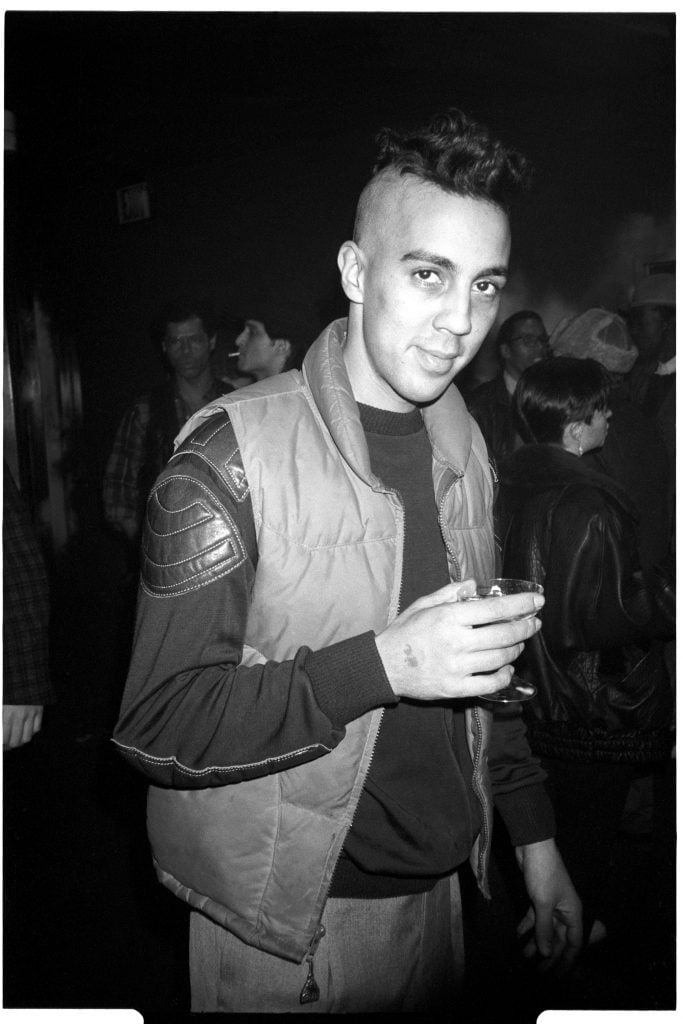
Futura 2000 in 1986. (Photo by Patrick McMullan/Getty Images)
Futura hasn’t done anything “technically” illegal since around 1981. After the Break train, he tried to bomb a few more cars with different color schemes, but only completed about 75 percent of each before he was chased away.
Unlike most other artists, Futura prefers to work alone. “I was very cognizant of being super quiet and stealth. Go in, do my thing, and get out,” he said. So, he gave up graffiti soon after and moved into his studio practice.
The early ’80s were a time of dramatic change for the artist. He met British punk rockers the Clash, whom he joined on tour to paint live on stage. He later contributed the artwork for band’s 1982 album Combat Rock. He also appeared in the film Wild Style, which featured early hip-hop legends like Grandmaster Flash.
“I was also 26 years old, and no longer a kid that would just get a slap on the wrist,” Futura said. “By 1984, I had my first kid, which is when responsibility really kicked in.”
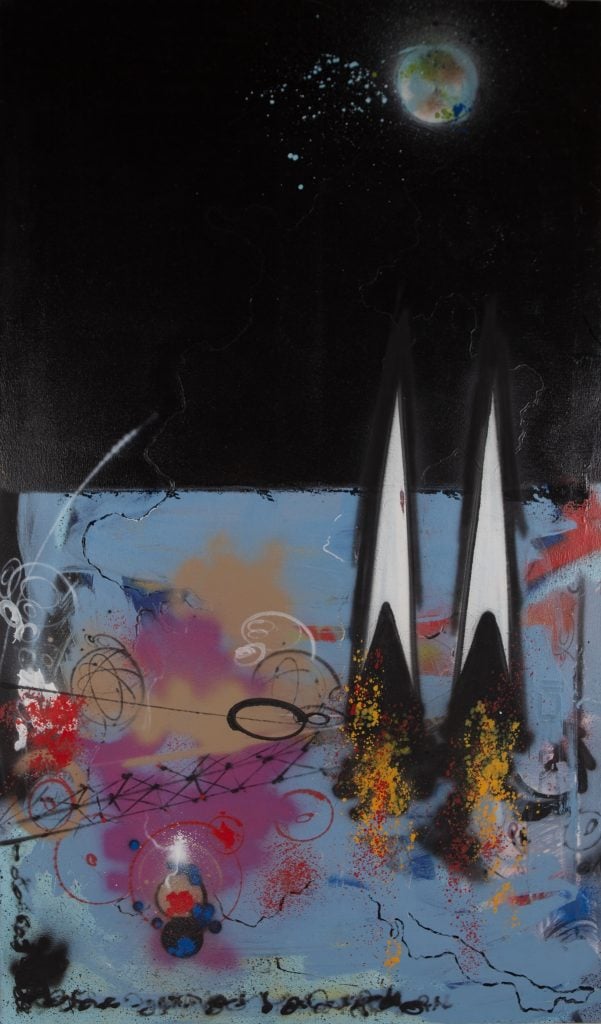
Futura, Invasion From Blue City (1989). Photo courtesy of Futura.
When the artist’s paintings started appearing in galleries, people likened him to Wassily Kandinsky. Futura suggested people needed to contextualize his work with the famous Russian abstractionist to “make it digestible” to the public. He admits he didn’t know a lot about art initially, besides names like Andy Warhol and Pablo Picasso. He looked to friends to find out more.
“I had to go to my boy Kylie Jenkins, rest in peace. Even in death, he was one of my oldest friends,” Futura said. “He was cultured, knew shit. He was my encyclopedia. I was like, ‘Why are they saying it’s like Kandinsky? Who is that?’”
Like Basquiat and Haring, Futura was a key artist at Patti Astor’s Fun Gallery. Others included Jenkins, Lee Quiñones and Fab 5 Freddy, as well as Lady Pink, one of the few dominant female graffiti artists at the time.
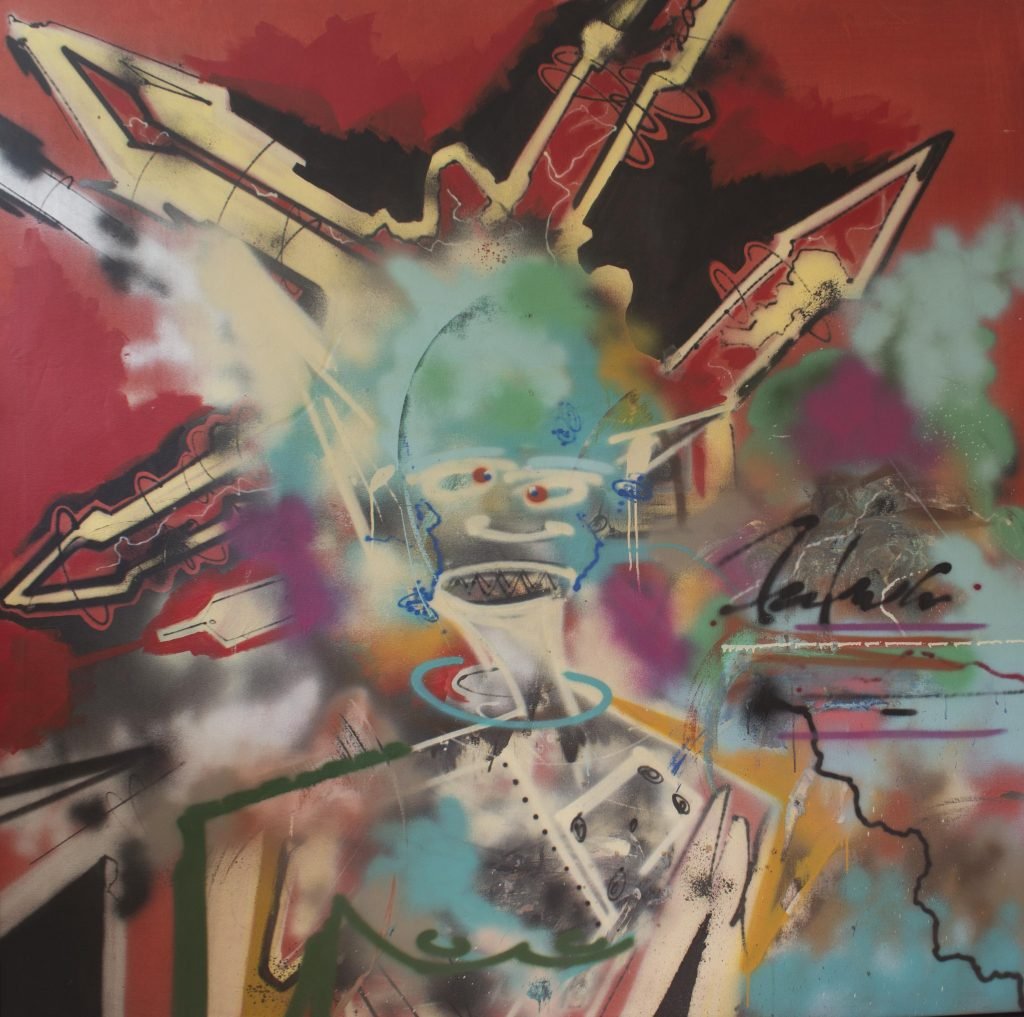
Futura, El Diablo (1983). Photo courtesy of Futura.
“I met Keith before I met Jean, and he was someone who was very helpful to me,” Futura said. “Before anything got started, Fred and I curated a show called ‘Beyond Words’ at the Mudd Club. That’s when I met Jean for the first time.”
Back then, Basquiat was doing his SAMO tag project with friend Al Diaz, what Futura called “site-specific poetry.” Futura was not yet aware of artists like Barbara Kruger or Jenny Holzer, but was fascinated by what his fellow graffiti artist was doing with text.
“Barbara and Jenny were speaking to society in specific terms. Jean was more ‘Let me do this in Soho’ with this interesting kind of word play,” Futura said. “I thought it was clever and premeditated. You didn’t see that in the Bronx. You didn’t see that in Brooklyn. It was all downtown.”
As for Haring, Futura said what his fellow graffiti artist was doing inside of trains was “a stroke of genius.”
“He got into that subway school on a weird exception because he wasn’t really a graffiti writer that goes and bombs trains,” Futura said. “But by using the blank, black spaces for the ads before they go up, he pointed out that it’s a chalkboard. There was something so authentic and organic. And he was down with the homies. God bless Keith.”
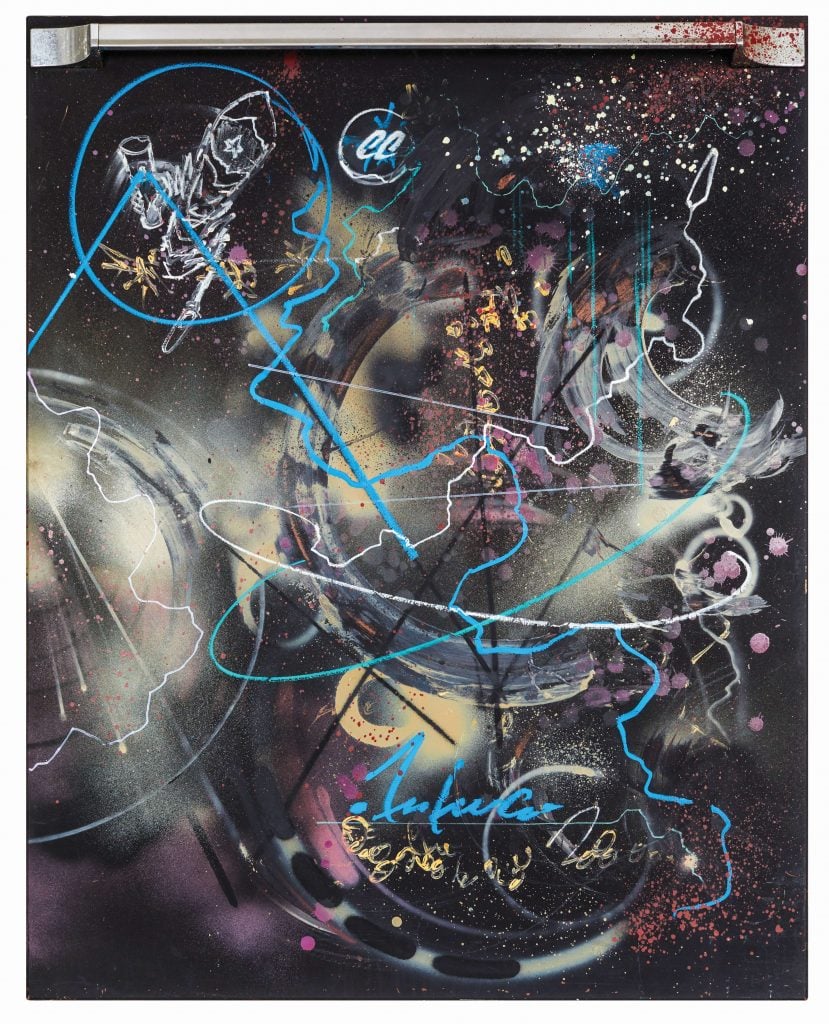
Futura, Garbage Rock (1983). Photo courtesy of Futura.
Futura’s career trajectory shifted by the late 1980s, when interest in street art began to wane. He struggled to sustain his career as a gallery artist and, as previously reported, hustled as a bike messenger and worked at a Queen’s post office among to make ends meet. He always maintained a studio practice and his resurgence began in 2020 with a solo exhibition at the Eric Firestone Gallery.
When asked if he has any regrets, he admitted he does, but kept the specifics private. He does, however, say he wished he had retained some Banksy-style invisibility.
“Banksy was pretty clever in his ability to maintain his anonymity,” he said. “But at the end of the day, I don’t want the identity of the artist that made the Break train to be a mystery.”
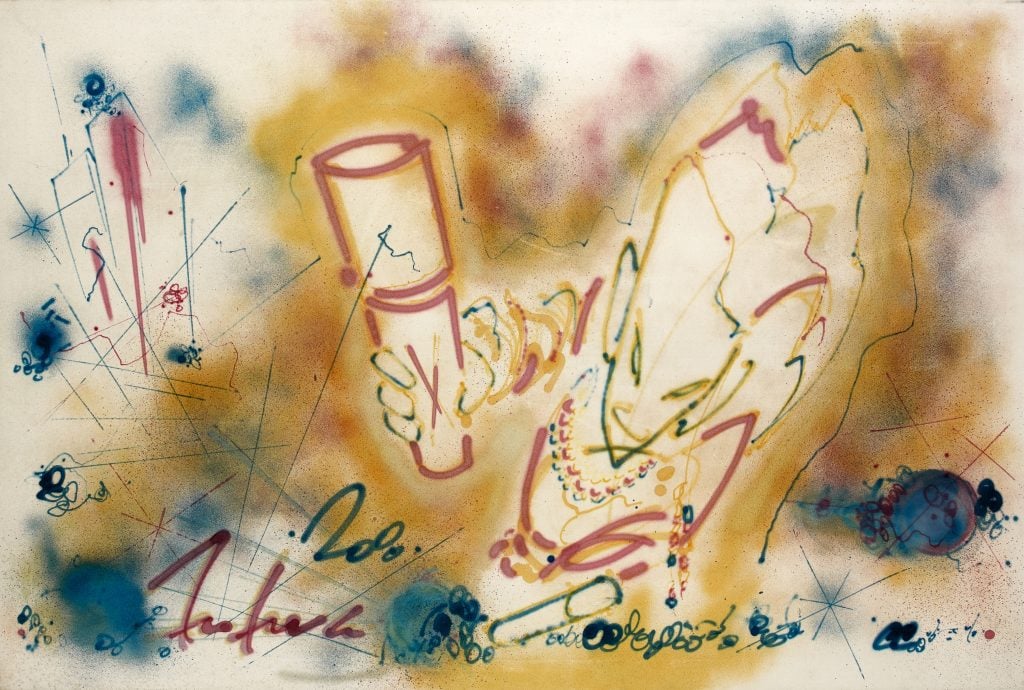
Futura, Under-Metropolis (1983). Photo courtesy of Futura.
At the other end of the scale, Futura credits Haring and his Pop Shop for “opening the door” to what brand partnerships and pop art merchandise could be. Without his own success of his corporate partnerships, he believes his own fine art market might have never made a resurgence.
“I am way through that door. I don’t even like to see the list of people I’ve co-branded with because it’s almost obnoxious,” Futura said. “But I’ve tried to have integrity with all those things and not just be a mercenary.”
“I finally got a chance to work with BMW. I wanted to paint an Art Car because they had such a history of that,” he said, adding that Warhol, Haring and Holzer were among the celebrated artists who have partnered with the car giant. “Finally, that was a dream fulfilled.”
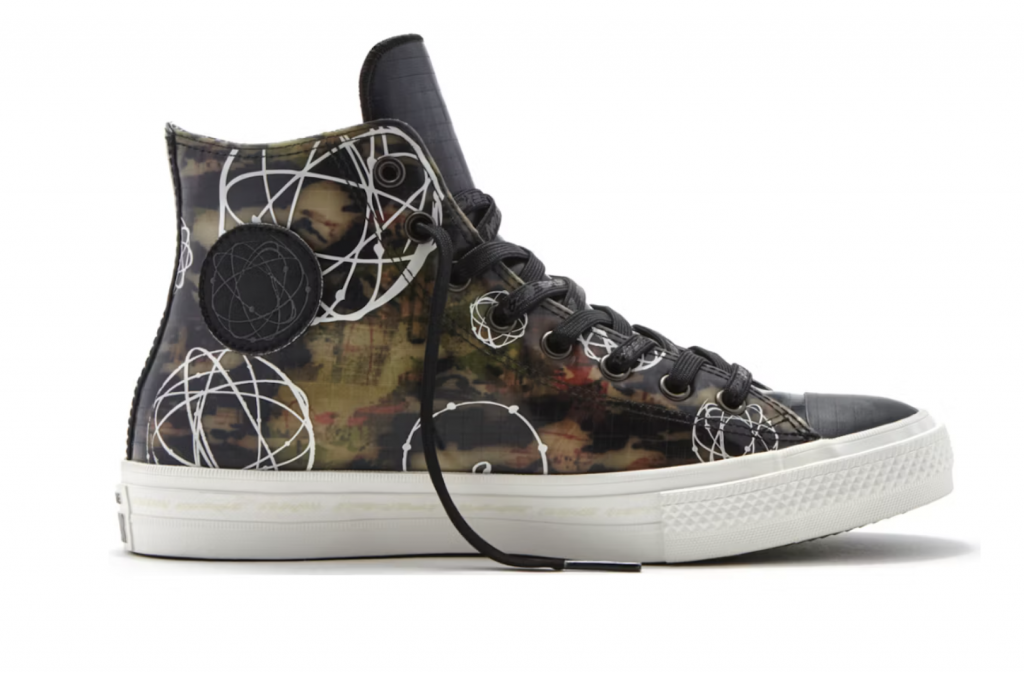
Converse Chuck Taylor All-Star II/Futura Camo. Courtesy of StockX.
He’s holding out for a collaboration with Apple, as a longtime consumer of their computers and phones. He has also had a significant partnership with Nike, releasing two shoes in limited-edition runs, one with a cap of 40,000 that has now sold out, and another specifically for friends and family, including a pair that is now being sold for a whopping $25,000 on the secondary market Goat.
The shoe design, admittedly, is based on one by Bernard Buffet called the “Paris Dunk.” Futura was drawn to it because he said it was the first time an artist’s work covered a sneaker, before all the creative collaborations that came in its wake.
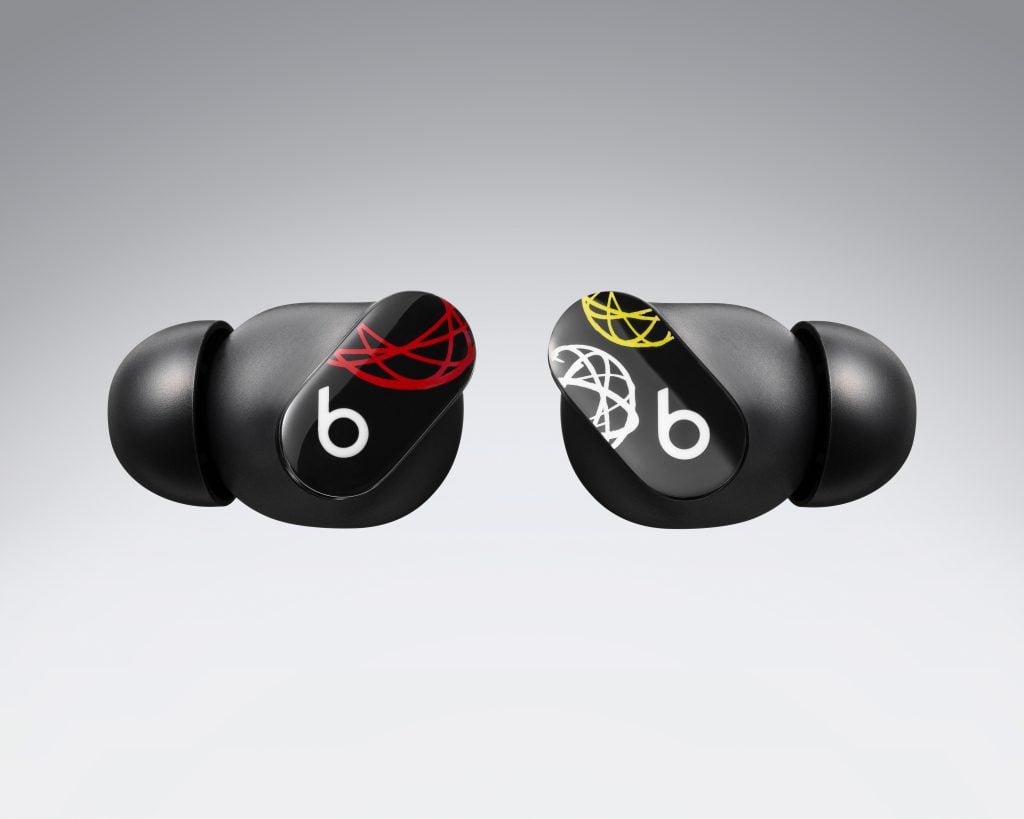
Special-edition Beats Studio Buds embossed with Futura’s signature “atom” motif. Courtesy of Beats By Dre.
“It is the biggest public art project I’ve ever been a part of, after everything I’ve done,” Futura said. “This is almost my biggest moment in getting my work out to the public.”
His views on the Dunks harken to his graffiti days, where tagging a train car meant free visibility of an artist’s brand. If he could, he’d pay the MTA to legally bomb a subway car again. But the MTA won’t let him do that, he said. The best they can offer is to wrap five subway cars minimum, at $50,000 a pop.
“The train runs 24 hours a day and everyone that’s exposed to it will see it. But it happens for a moment and then it’s gone. You sell a print to someone, and it hangs on their wall. If you paint a mural somewhere, it sits on a static wall,” Futura said. “You do this crazy sneaker, and everyone’s fucking walking around in it.”
“Futura 2000: Breaking Out” is on view at the Bronx Museum, 1040 Grand Concourse, Bronx, New York, September 8, 2024–March 30, 2025.

